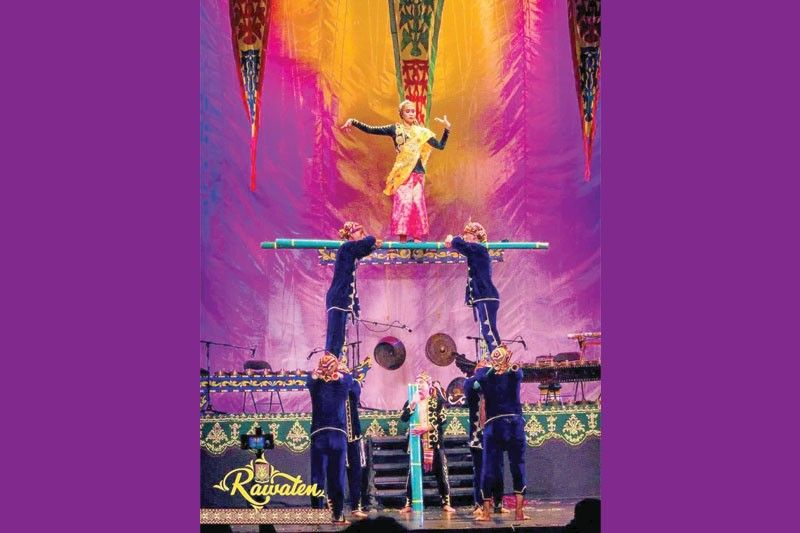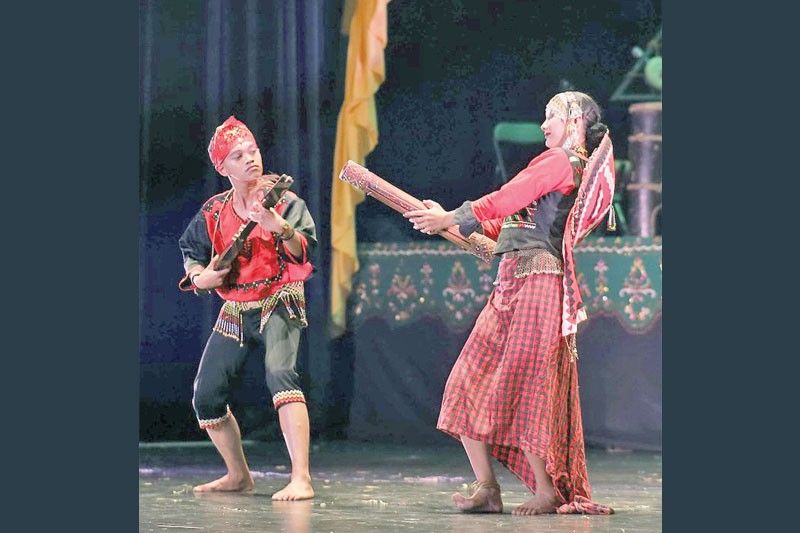Mindanao’s vibrant culture takes centerstage at the MET’s Rawaten

MANILA, Philippines — Adorned with the signature Okir artform of the ethnic groups of Mindanao, the stage of the Metropolitan Theater in Manila recently became the backdrop of the Rawaten Cultural Extravaganza, a vibrant showcase of Mindanao’s rich culture and heritage. Presented by the Mindanao State University system with the National Commission for Culture and the Arts, the performance was a successful celebration of Mindanao’s vibrant ethnic groups and tribes.
The repertoire followed the theme, “From the Sky to the Sea,” exploring the significance of water in the lives of the indigenous peoples of Mindanao and encapsulated the deep-rooted connection between these communities and the various bodies of water surrounding them.

For instance, the Meranaw people are known as the “people of the lake” because of the nearby Ranaw or Lake Lanao they call home. Similarly, the Maguindanaoans, or the “people of the flood plains” derive their identity from the vast plains transformed into fertile lands during the rainy season. The Subanen, known as the “people of the river,” embrace their name as a reflection of their close ties to rivers and reliance on them for sustenance. The Tausug, or the “people of the current,” recognize the ever-changing flow of water as an embodiment of their resilience and adaptability.

Beyond being a vital source of livelihood, water profoundly influences the expressive movements of these indigenous communities’ traditional dances. Their dances’ fluidity, grace, and rhythmic patterns often mirror the ebbs and flows, the gentle caresses, and the powerful surges of water.
The audiences were taken to a journey in five parts starting with the powerful Langit: Dalogdog ug Kidlat (Sky: Thunder and Lightning) which featured Kapagonor and Kakulintang, showcasing the mastery of Mindanao’s kulintang musicians. The deep and mesmerizing music of the kulintang, and its intricate rhythmic patterns set the stage for the ethnic dance performances that followed.
The second part was the Ulan: Gasa sa Langit (Rain: Gift from the Sky) which enchanted with Higaonon and Manobo dances. The audiences were most captivated by the dance steps apparently depicting the movement of birds and the rhythmic stomping and jumping of the Dugso dance, which is performed to please the deities.
Ranaw: Kaanyag ug Kalinaw or Beauty and Serenity followed, where graceful Meranaw dances mirrored the tranquil waters, symbolizing the profound connection between the Meranaws and the Lanao Lake.
The portion featured Maranao folk dances, most notably Singkil which left the audiences in awe of the precise footwork of dancers as they gracefully avoid clashing with the bamboo poles gaining applause at the end of the performance.
Suba: Tinubdan sa Kinabuhi or River: Source of Life was a tribute to the life-giving rivers of Mindanao, featuring dances from the Subanen and Maguindanaoans.
The saliringan leaves of the Subanen were a special element of this portion where men and women of the tribe were depicted calling on the deities for a bountiful harvest and safe return from journeys. Likewise, the Sagayan of the Maguindanaoan captured the attention of the audiences, with its fierce movements and the brandishing of weapons such as the kampilan (sword) and kalasag (shield).
The final portion, Ragat: Gakos sa Kianiyahan or Sea: Nature’s Embrace, explored the mimetic and playful dances of the T’Boli and the Blaan bringing the whole performance full circle to the embrace of the sea.
The performances depicting the tribes of the Sulu archipelago were a fitting end for the repertoire, ultimately surprising the audiences to a series of thrilling dances such as the pangalay ha pattong, where a female dancer balances herself on top of multiple layers of bamboo poles.
Finally, the Sining Kambayoka ensemble of Mindanao State University also presented the encore performance of the play Si Pilandok about a legendary figure from Meranaw folklore from the mythical realm of Agamaniyog.
Aside from the witty lines and captivating storyline, the play also transformed to incorporate the modern issues of Philippine society, tackling issues such as the West Philippine Sea, the Senate hearing on the 2024 confidential and intelligence funds of various government agencies, and the imminent threat of the nippah virus. It was not only an entertaining piece for the audiences but also a reminder of the struggles and moral challenges of the Philippines as a nation.
Indeed, the Rawaten Cultural Extravaganza was a resounding success as a testament to the rich culture and heritage of Mindanao. It was not only a celebration of Mindanao State University’s diversity, but also a platform for Mindanaons to share their culture with the rest of the world. Director Tom Russ shared that the Rawaten is in talks to be staged abroad in the next years, an opportunity that the rest of the country should really look forward to.
- Latest
- Trending



















 Exclusive
Exclusive













